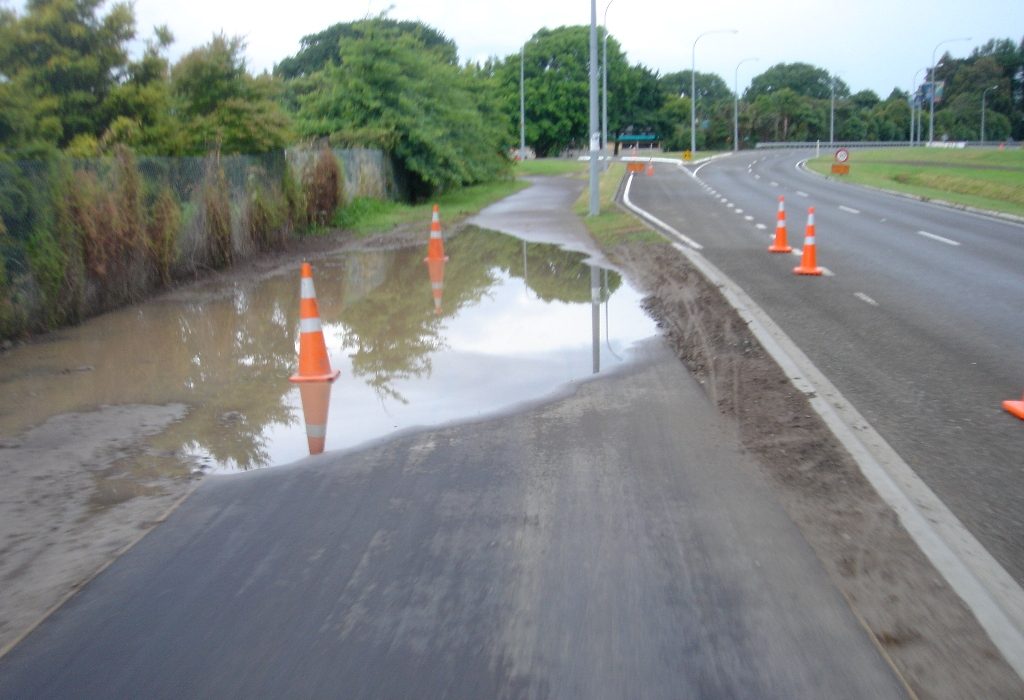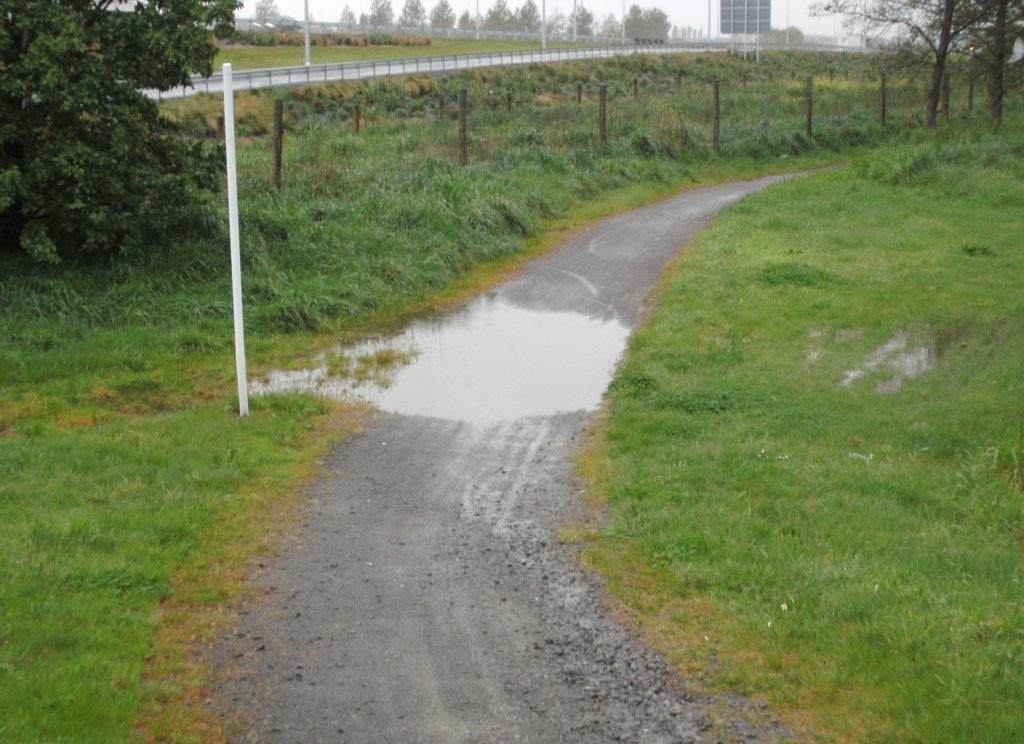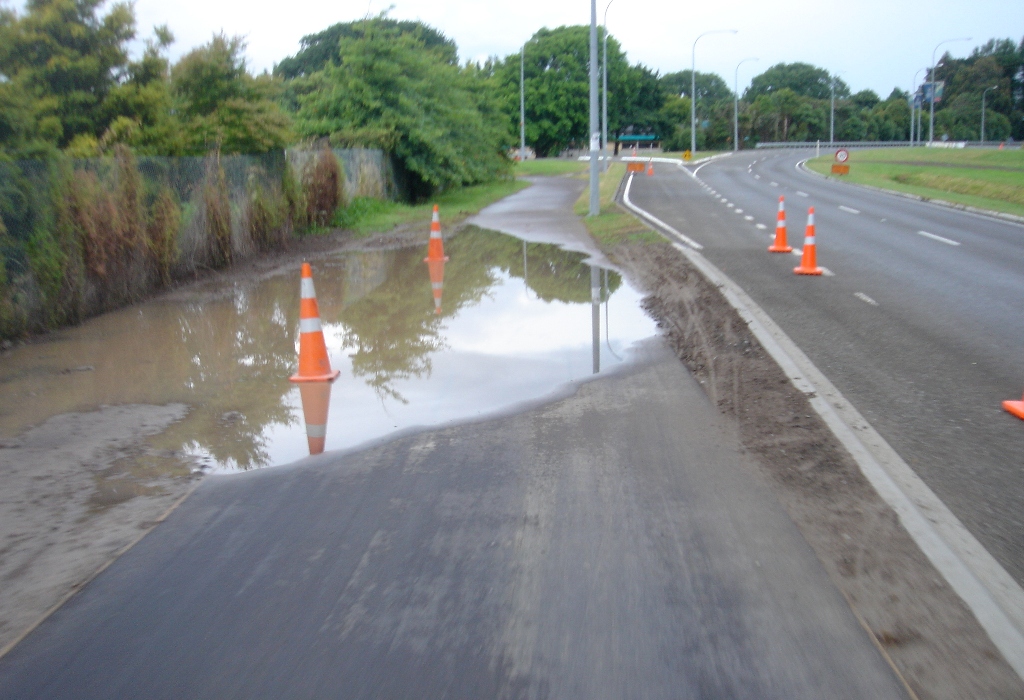Any time there’s a decent rain (like this past evening) it’s instructive to see how our various cycle paths fare. Often it seems that it doesn’t take a lot of water for them to more closely resemble a swimming pool than a transport route.

I’ve often felt that pathway designers get the use of their straight-edge rulers mixed up. Horizontally and vertically they seem to have no problem creating pathways that twist and turn and rise and fall. But when it comes to the shape of the path surface cross-section itself it is often dead flat across. No wonder then that water on top stays put.

Standard road design calls for a minimum crossfall slope across, usually with a highpoint at the centre (called a “crown”). The reason for this is quite simple – to ensure that any rainfall runs off the road surface to the adjacent shoulders (where hopefully some decent drains have been provided). This is pretty important for traffic safety in the wet and to maintain the integrity of the underlying pavement structure.

So how hard is it to do likewise for our paths? Pathway design guides generally call for 1-2% crossfall (either right across or from a central crown); i.e. 1-2cm rise for every 100cm across. Enough to provide drainage but not enough to cause problems for wheeled users like wheelchairs (although if it has a crown they could straddle this).
Another simple trick is to make sure that the path is slightly above the surrounding ground – if it’s in a low spot then it won’t be surprising if the water stays there. Roads were historically called “highways” for a reason – they were generally built above the surrounding landscape. In less civilised times, this was more to minimise the chances of ambush, but it did have the handy side effect of also ensuring that the roads were reasonably well drained.

With the move to more pathways around the city, riders should not have to face second-class facilities. It’s just a case of applying some of the same principles that we use for roads.
Do you encounter problems with pathways in the wet?


Life isn’t about waiting for the storm to pass. It’s about learning how to dance in the rain 🙂
Cycle paths in Christchurch should be paver laid so they are smoother. This is easier to construct if there is a single crossfall than a crown. If the path is not designed for level in detail the contractor will follow the contours and recreate the hollows in the new path – more design & contractor experience needed here. Also, over time, the grass grows up and the paths sink so adding plenty of height to the path levels will aleviate this problem for longer.